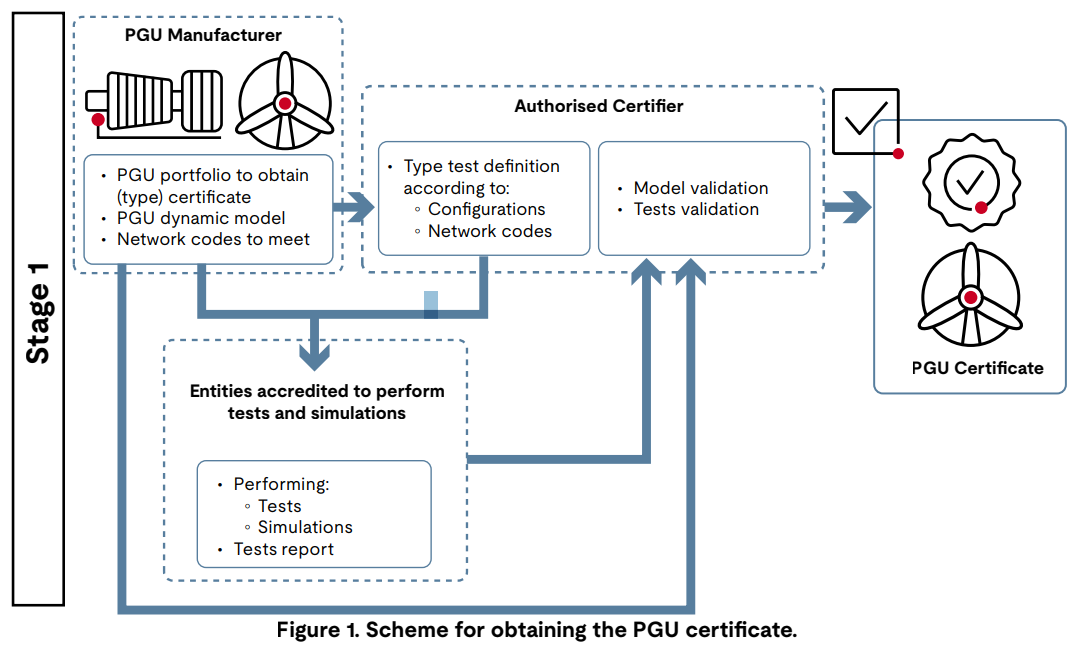By Dr. Miguel Martinez, principal engineer, Energy and Industrial Automation, UL Solutions
Grid code compliance is critically important for any equipment connecting to the electric grid. Compliance supports safer and more stable operation within a power system. Certification of power generating units (PGU), such as photovoltaic (PV) systems, wind turbines or other energy sources, provides confirmation to utilities and regulatory authorities that these systems have met the standards for which they were tested.
The purpose of grid code certification is to demonstrate that a power plant or generating unit meets applicable system-level requirements for local and international grid standards.
UL Solutions is an accredited testing and certification body under ISO/IEC 17025 and ISO/IEC 17065 for more than 60 different utility grid safety codes worldwide. We offer two dedicated certification categories: one for power plants or power generating systems (PGS), including PV power plants and wind farms, and another for PGU, including power converters, PV inverters and others.
To deliver these services, UL Solutions structures its electric utility grid code compliance offerings around three main pillars:
Testing
Grid code testing for power converters, power plant controllers, storage systems and wind or PV power plants in our testing facilities, customer facilities or in the field. Our grid code testing evaluates:
- Power quality – Harmonics, interharmonics, high-frequency components and flicker measurements
- Power feed-in after grid frequency change – Measurement of active and reactive power injection during grid frequency variation (increasing and decreasing)
- Active power setpoint – Response time and power accuracy measurement following a power setpoint command
- Power capability (P-Q diagram) – Measurement of active and reactive power capability under excited and overexcited values
- Reactive power control – Measurement of reactive power behavior based on different control modes, including reactive power, power factor and voltage control
- Dynamic support – Testing the connection and recovery behavior of reactive power feed-in during abnormal voltage conditions (under-voltage ride-through and over/under voltage ride-through)
- Protection functions – Measurement of disconnection times during over/under-voltage and over/under-frequency events
These tests are generally applicable across global markets, with parameters and methods adapted to meet country-specific grid code requirements.
Simulation
UL Solutions performs root mean square (RMS) and electromagnetic transient (EMT) simulations to evaluate the behavior of power converters, power plant controllers and storage systems. Model validation is performed using test data and simulation results.
Other types of power plant-level simulations performed by UL Solutions include:
- Short-circuit study – Evaluation of short-circuit levels at various points in the power plant up to the grid connection point, using a DIgSILENT model prepared by UL Solutions. The procedure and methodology follow IEC 60909 and applicable local standards.
- Electrical loss calculation study – Analysis of electrical losses in the evacuation system in steady-state conditions across load levels from 0% to 100% in 1% increments. Results include total losses, generated power and power at the grid connection point.
- Load flow study – Steady-state analysis using a DIgSILENT model to simulate various voltage references in the grid connection point, active and reactive power, and load flows in lines and transformers in accordance with applicable standards.
- Harmonic study – Harmonic distortion analysis at the grid connection point based on manufacturer provided data and client input. Simulations are performed at different power levels, following guidelines such as those provided by Red Eléctrica de España (REE).
- Energy quality study – The energy quality studies focus on the analysis of harmonics, flicker and behavior under rapid voltage changes in wind farms and PV plants.
- Stability study – Analysis that the renewable installation remains connected to the grid in all required scenarios without losing stability or generating undesirable disturbances, in compliance with the applicable grid code.
- Protection adjustment and coordination study – Evaluation of fault impacts (short circuits) of different types at different points and definition of protection settings and coordination for substation lines to support protection criteria compliance.
- Transient studies – Analysis of slow, fast and very fast front overvoltages, as well as temporary overvoltages.
- Damping analysis – Assessment of generator contributions to damping power system oscillations.
- Arc flash studies – Simulation-based evaluation of arc flash hazards in generators and power plants.
Certification
Certification is based on the results of testing and/or simulations. Grid code certification for power converters, power plant controllers, storage systems and wind/PV power plants varies by region. UL Solutions offers expert guidance to help manufacturers and developers understand these differences and navigate compliance.
Certification of power plants



